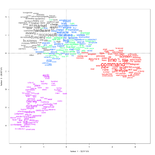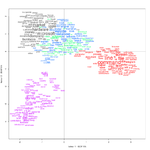Iramuteq: Difference between revisions
Jump to navigation
Jump to search
mNo edit summary |
mNo edit summary |
||
| (3 intermediate revisions by the same user not shown) | |||
| Line 1: | Line 1: | ||
{{Data mining and learning analytics tools | {{Data mining and learning analytics tools | ||
|field_logo=Iramuteq-logo.png | |field_logo=Iramuteq-logo.png | ||
|field_screenshot= | |field_screenshot=AFC2DL.png | ||
|field_name=IRaMuTeQ | |field_name=IRaMuTeQ | ||
|field_developers=Pierre Ratinaud, LERASS | |field_developers=Pierre Ratinaud, LERASS | ||
| Line 15: | Line 15: | ||
Iramutec is built on top of [[R]] | Iramutec is built on top of [[R]] | ||
As of oct 2014, there is only a french Interface, but the software can deal with English texts. | |||
|field_analysis_orientation=General analysis | |field_analysis_orientation=General analysis | ||
|field_data_analysis_objective= | |field_data_analysis_objective= | ||
| Line 40: | Line 42: | ||
'''Input documents''' | '''Input documents''' | ||
Input documents are plain text files that containing simple markup that identifes variables and topics (see [http://www.iramuteq.org/documentation/formatage-des-corpus-texte Formatage des corpus texte]. This allows to distinguish between: | This software allows to analyse documents that are segemented into chunks. Input documents are plain text files that containing simple markup that identifes variables and topics (see [http://www.iramuteq.org/documentation/formatage-des-corpus-texte Formatage des corpus texte]. This allows to distinguish between: | ||
* A text | * A text | ||
* A text segment | * A text segment | ||
* A combination of text segments | * A combination of text segments | ||
'''Installation''' | |||
Installation under Ubuntu 14 (Trusty): | |||
* It worked | |||
* Get the deb file | |||
sudo dpkg -i iramuteq_0.6-alpha3_all.deb | |||
# repair something with python | |||
apt-get -f install | |||
'''Exemples d'utilisation''' | '''Exemples d'utilisation''' | ||
| Line 54: | Line 65: | ||
* Reinert M. (1983). Une méthode de classification descendante hiérarchique : application à l'analyse lexicale par contexte, Les cahiers de l'analyse des données, Vol VIII, n° 2, p 187-198. | * Reinert M. (1983). Une méthode de classification descendante hiérarchique : application à l'analyse lexicale par contexte, Les cahiers de l'analyse des données, Vol VIII, n° 2, p 187-198. | ||
[[fr: IRaMuTeQ]] | |||



